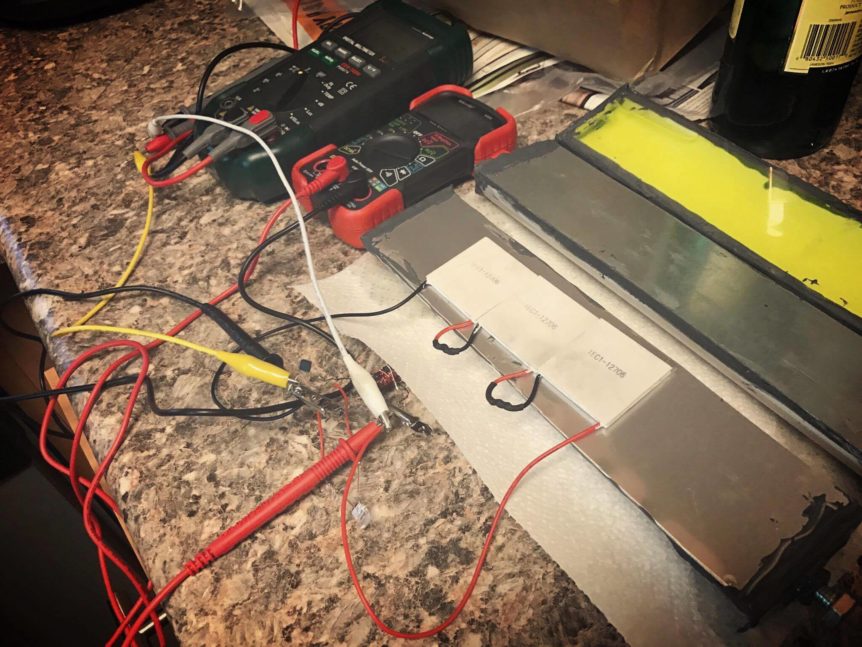The Thermal Energy Team has completed their testing and data analysis for the different material and fluid combinations. Steel & coolant had the highest power output and will be used to fabricate the final body-powered flashlight.
Aluminum, steel, and polystyrene (a type of plastic) were tested with air, water, and radiator coolant. These materials and fluids have the following properties (thermal conductivity):
Aluminum – 205 W/mK
Steel – 16 W/mK
Plastic – .03 W/mK
Air – .024 W/mK
Water – 0.58 W/mK
Coolant – 0.25 W/mK
All 9 possible combinations were tested using two multi-meters, measuring voltage and current every 10 seconds, for 100 seconds. The probes were connected to the positive and negative ends of the LED bulb. An infrared thermometer was also used to collect temperature data of each surface.
Theoretically, air should have been the highest performing combination due to the low thermal conductivity (stays cool longer). However, due to the initial temperatures being cooler in the coolant, the cold side of the peltier was able to maintain a cooler temperature. This provided a larger temperature difference of 11.9 deg F.
The team will now move on to fabricate their final body-powered flashlight. It will consist of the steel/coolant combination and improved peltiers.

